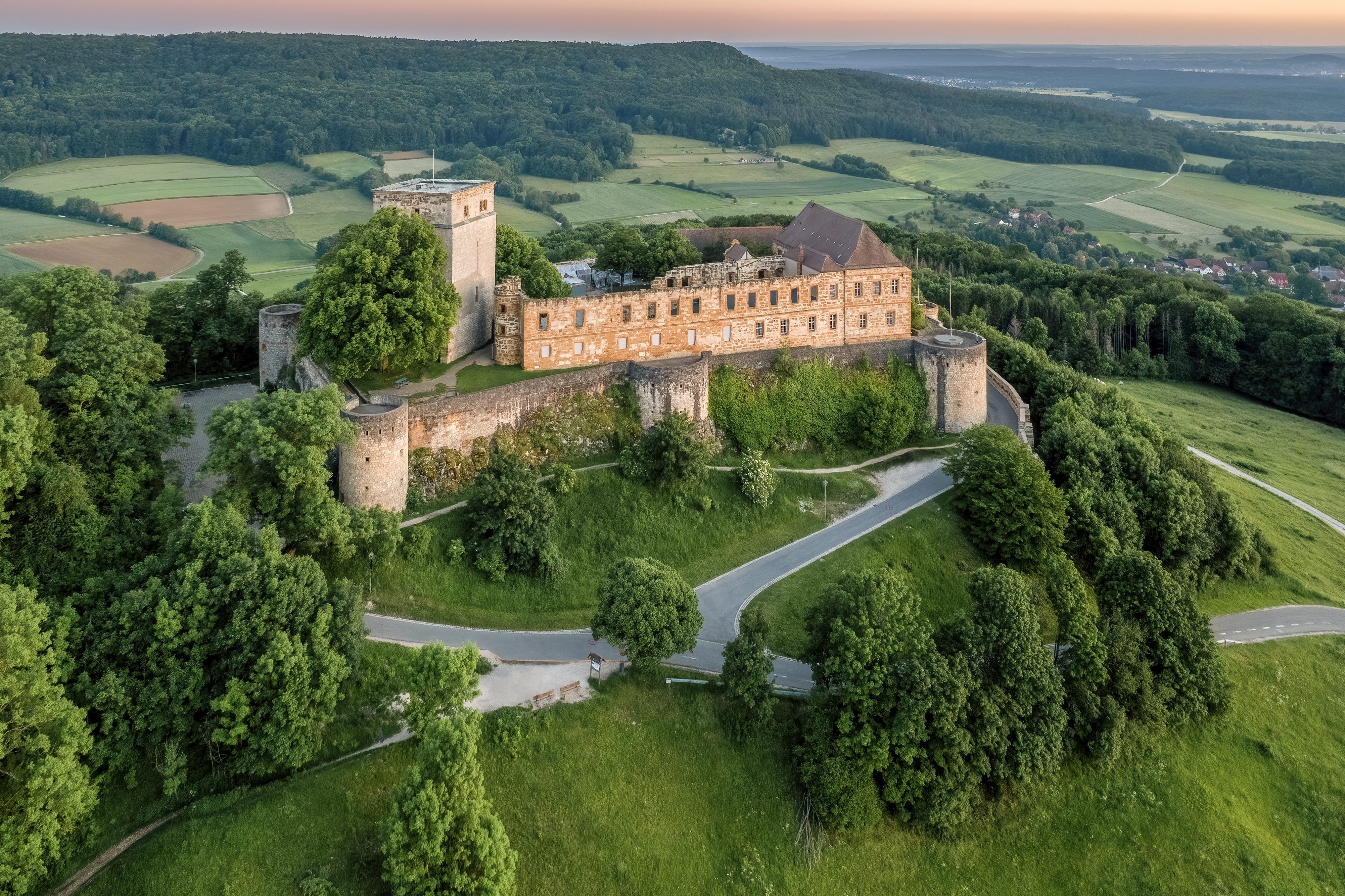Giechburg on:
[Wikipedia]
[Google]
[Amazon]
 The Giechburg is a partly reconstructed hilltop castle located within the town of
The Giechburg is a partly reconstructed hilltop castle located within the town of
 The Giechburg is a partly reconstructed hilltop castle located within the town of
The Giechburg is a partly reconstructed hilltop castle located within the town of Scheßlitz
Scheßlitz (or ''Schesslitz'') is a German town in the Upper Franconian district of Bamberg and lies on the rise to the Franconian Switzerland on the A 70 between Bamberg and Bayreuth, lying 14 km northeast of the former.
Geography
The t ...
in Upper Franconia
Upper Franconia (german: Oberfranken) is a ''Regierungsbezirk'' (administrative 'Regierungs''region 'bezirk'' of the state of Bavaria, southern Germany. It forms part of the historically significant region of Franconia, the others being Middle F ...
, Bavaria
Bavaria ( ; ), officially the Free State of Bavaria (german: Freistaat Bayern, link=no ), is a state in the south-east of Germany. With an area of , Bavaria is the largest German state by land area, comprising roughly a fifth of the total lan ...
, Germany
Germany,, officially the Federal Republic of Germany, is a country in Central Europe. It is the second most populous country in Europe after Russia, and the most populous member state of the European Union. Germany is situated betwe ...
. The castle has given its name to a constituent community within the town.
History
Archeological evidence indicates that this hilltop was fortified as far back asNeolithic
The Neolithic period, or New Stone Age, is an Old World archaeological period and the final division of the Stone Age. It saw the Neolithic Revolution, a wide-ranging set of developments that appear to have arisen independently in several p ...
times. The castle enters written history in 1125, and its possession thereafter is marked by a succession of wills and bequest documents, punctuated by at least one forcible transfer in 1142. The castle entered the possession of the prince-bishops of Bamberg in 1390, and its history thereafter is closely allied to the bishopric and the city of Bamberg. From 1421 until 1459, a period of disorder associated with the Hussites
The Hussites ( cs, Husité or ''Kališníci''; "Chalice People") were a Czech proto-Protestant Christian movement that followed the teachings of reformer Jan Hus, who became the best known representative of the Bohemian Reformation.
The Huss ...
in nearby Bohemia, the castle was further fortified and strengthened until it took its final form as a mature medieval castle with a keep.
As gunpowder
Gunpowder, also commonly known as black powder to distinguish it from modern smokeless powder, is the earliest known chemical explosive. It consists of a mixture of sulfur, carbon (in the form of charcoal) and potassium nitrate (saltpeter). Th ...
warfare matured, the Giechburg was no longer useful as a strongpoint. It was adaptively reused by the prince-bishops, especially Johann Philipp von Gebsattel
Johann Philipp von Gebsattel (13 May 1555 – 26 June 1609) was the Prince-Bishop of Bamberg from 1599 to 1609.
Biography
Johann Philipp von Gebsattel was born on 13 May 1555. He was elected Prince-Bishop of Bamberg on 4 February 1599, with ...
, as a hunting lodge and by later prince-bishops as the headquarters of a horse farm. However, with secularization in 1802, the Giechburg no longer had an owner with an interest in maintenance and upkeep. The former castle was used as a quarry for dressed stone, and became a ruin.
The Giechburg was acquired by the district of Bamberg in 1971, and was reconstructed as a conference and hospitality center. Signage describes the history of the castle and the topography of Upper Franconia.
References
{{coord, 49.9549, 11.0495, type:landmark_region:DE, display=title, format=dms Castles in Bavaria Buildings and structures in Bamberg (district)